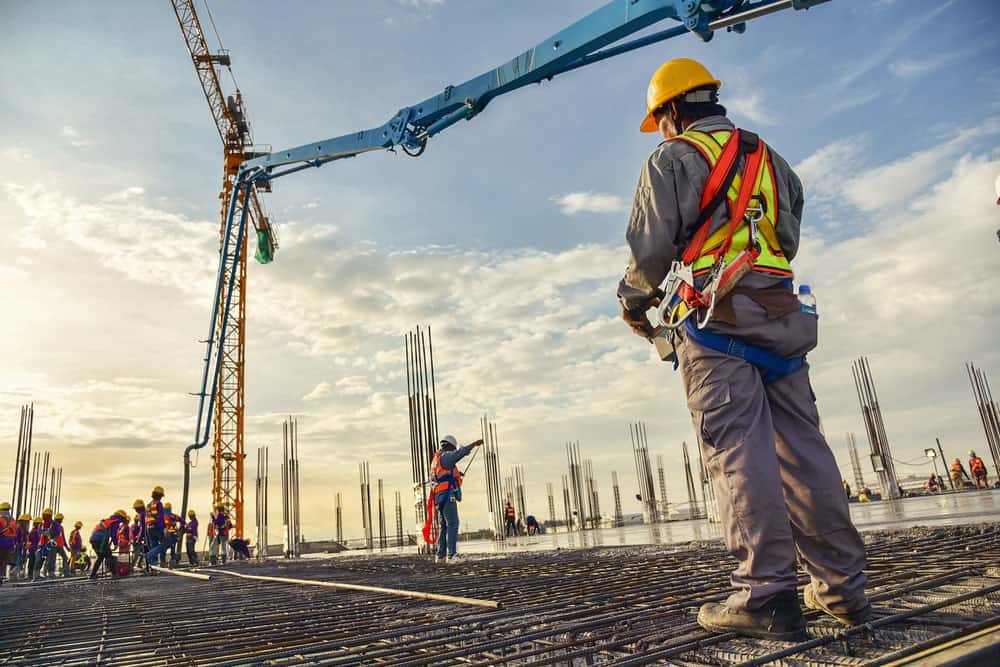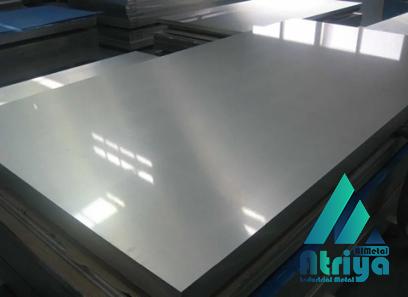There is no question that steel is one of the most well-known and widely utilized materials in the entire globe.
It has different applications in the construction and automotive industries, as well as the commercial food service and medical fields. However, not all steel is the same, and not all types of steel are what is appropriate for use in the kitchen or in the construction of metal structures.
Steel comes in a wide variety of forms and grades, and each of those forms has a specific application. This article will educate you on the various kinds of steel as well as the uses for it.
What exactly is steel, and how does one go about making it?
In spite of its widespread use, a surprising number of people are unfamiliar with steel’s distinctions from those of other metals. Iron and carbon are the two primary components of steel.
As a rule of thumb, the iron component of the combination should account for the vast majority of the total, and the amount of carbon present should not be higher than 2.11%. Cast iron is the name given to the material when it has a higher carbon content.
Steel may also contain other metals, elements, or non-metallic inclusions, all of which have the potential to alter the properties of the steel. Continue reading if you want to learn more.

The production of steel typically takes place in one of two types of furnaces: a blast furnace and an electric arc furnace. Pig iron is produced in the blast furnace by using coke, iron ore, and limestone as the raw materials.
When the oven is heated, the coal begins to melt, and as a result, the majority of the flammable substances, such as oil, tar, hydrogen, nitrogen, and sulfur, are eliminated. After the mixture is combined, it is poured into molds and processed further, such as by rolling it, to produce steel goods such as bars, sheets, or pipes.
The utilization of recycled steel scrap lies at the core of the electric arc furnace production method. Electricity is allowed to pass between the charged material and the electrodes in order to facilitate the melting process.
The amount of scrap that can be treated in arc furnaces is very low since steel has a high durability. This limits the amount of scrap that can be processed. Because of this, the blast furnace approach is the one that is most commonly used.
Steel’s capabilities in terms of technology and mechanical design
Steel, like any other material, possesses a variety of properties that are critical to the operation of particular industries. In this chapter, we will be concentrating on the aspects that are pertinent to construction because these encompass the most essential aspects. These include:
Elasticity can be defined as the capacity of a material to return to its original shape if the force that was responsible for its deformation is no longer acting on it. In many instances, the value of the elastic limit is also provided. When it is exceeded, the material will remain permanently distorted and will not revert to its original shape.

Tensile strength is defined as the highest load that a material can withstand without cracking when it is stretched to its limit.
Plasticity is the ability of a material to retain a permanent deformation, also known as a shape change that cannot be undone in reaction to external forces. The idea of a plastic limit is applicable in this scenario as well, just like it is in the scenario involving elasticity. The material has reached its maximal plastic deformation, also known as its breaking point, when this happens.
Steel must have ductility in order to preserve its qualities during the many processing steps, including stamping, bending, and straightening.
The amount of energy that a material is able to endure when a load is suddenly applied to it is referred to as its impact strength.
Hardness refers to the amount of force that steel is able to resist when being pressed by substances that are harder than it.
Weldability refers to the capacity to produce lasting connections through the process of welding. It is possible to utilize the MAG, MIG, MIG/MAG, or TIG method of welding, depending on the grade of the alloy.
What are the various kinds of steel that are available?
It is generally agreed upon that the chemical composition of steel is one of the most important factors to examine when classifying the substance in relation to the other metals.
The overarching category known as “steel” can be broken down into two basic subgroups, namely, unalloyed steels and alloyed steels.

The distinction lies in the chemical make-up of the components that were tacked on in an effort to obtain new qualities or enhance those that were already there. The use of plastic is taken into consideration in yet another classification that is widely utilized.
These can be structural steels, tool steels, or even specialized steels such as steels that are resistant to corrosion. Stainless steels are another illustration of this.
Alloy steel
On occasion, the usage of a material that possesses certain attributes that are not present in standard unalloyed steel may be required.
In such cases, the material in question may be necessary. In order to achieve this objective, during the manufacturing process, extra components that provide it new features are inserted. This helps to ensure that the objective is met. An example of an alloy steel is presented below.
According to the standards that have been established by the sector, the amount of one additional component should have a content that is either equal to or higher than that which is given in the table that contains the maximum allowable mass concentration. Why do we put additives into products, and what are the benefits of doing so?
It makes steel more resistant to being hardened by heat.

Certain characteristics of the strength are achieved.
The structure of the alloy is going through some transformations.
Processing by thermal means is both simpler and produces higher-quality output.
The steel will take on new chemical and physical characteristics as a result of this process.
It is dependent on the element that has been chosen as to which parameters will be improved by the alloying additions. Different properties are contributed by each of them.
When trying to achieve wholly new properties, it is common practice to combine the effects of multiple chemicals. The following is a list of some of the more prevalent components utilized in the manufacturing of alloy steels:
Chromium is an element that contributes to the improvement of a material’s strength, hardness, and toughness. It has a beneficial impact on the hardenability of some types, such as tool steels, for example. In stainless steels, it is responsible for the corrosion resistance that the steel possesses.
Nickel possesses several of the same characteristics as Cr. In addition to this, the temperature at which the brittleness threshold is reached is lowered. Its potential to increase the hardenability of steel is enhanced when combined with chromium and molybdenum.
Manganese is another element that helps make things harder and stronger. On the other side, this decreases the flexibility of the material. The elastic limit is increased, and the abrasion resistance is strengthened as a result of this.
Silicon is added to pig iron because of the deoxidizing qualities that silicon possesses. Strengthens and makes the material harder.
Molybdenum is an element that improves the steel’s capacity to become harder. After high tempering, its brittleness is decreased as a result of this property.

The amount of different additives that were used to make alloy steel can be used to categorize the finished product. There are three different kinds:
Steel that is classified as low-alloy has a total additive composition that is greater than 3.5% but less than 2% of that total comes from the primary additive.
Medium-alloy steel has a content range of between 2 and 8% for the primary additive, and the total amount of all additives combined is less than 12%.
In high-alloy steel, the proportion of the primary additive to the total is greater than 8%, but the overall proportion of additives is lower than 55%.
Steel industries applications
Steel can be subdivided into several categories based on the industries applications in which it is most commonly used because there are so many different ways it can be put to use.
Each type possesses a unique combination of technological and mechanical characteristics, which enables it to perform a wide variety of functions.
This division includes things like structural steel, for example. As its name suggests, it is utilized in the manufacturing of structures, as well as the production of machine parts and the fortification of other alloys.

There are various varieties of structural steel, including the following:
general-purpose structural steels
steels for building structures of a greater grade
steels for structures with a low alloy content
structural steels for carburising
structural steels for nitriding
steels used in construction that can be heat treated
spring structural steels
steels for building structures that can be cut easily
structural steels bearing bearings
structural converter steels
Tool steels are yet another type that is widely used. They are characterized by an exceptionally high level of hardness as well as a resistance to abrasion.
Because they do not deform even after prolonged use and are not affected by excessive heat, they are frequently used in the production of tools, measuring instruments, and other goods with comparable characteristics.
These qualities are able to be attained because to the relatively high carbon content of the material as well as the necessary heat treatment. The following is a breakdown of the various tool steels:
carbon tool steels
alloy tool steels
work done under chilly conditions
for labor in hot conditions
high-speed
The term “special steels” refers to alloys that contain a significant quantity of extra elements. They can be identified by a very narrow range of characteristics and call for a sophisticated thermal treatment.
Steel that is extremely resistant to a particular set of environmental variables is frequently included in this group. You will find some examples of specialty steels listed down below:
stainless steel
austenitic steel
steel that is ferritic
martensitic steel
duplex steel
steel resistant to acid
creep-resistant steel
heat-resistant steel
magnetic steel
Steel designation system. The question now is, how can you determine the grade of the steel?
You should not be concerned about anything at all, even if you are not a trained steelworker and are unable to determine at a glance what kind of steel you are working with, because this is not an issue. In order to make it simpler to distinguish between the many kinds of alloys, a specific designation system that is based on the material’s application and the mechanical properties that it possesses is utilized.
It is composed of at least one additional sign in addition to its two primary components. The first illustration depicts the final application of the steel.

This is displayed as a capital letter for clarity. The following list provides the respective codes for the various types of alloys:
S – structural steel
L refers to steel used for making pipes and tubes.
B: steel used in the production of reinforced concrete
R stands for “steel for use in rails.”
steel for compression strings denoted by the letter Y
P – steel for pressure apparatus
G – cast steel
The minimal plastic limit is represented by the second symbol, which is a three-digit value labeled Re (MPa). It is adopted for items with a thickness that is either less than or equal to 16 millimeters for the majority of steels.
The only exception to this rule is heat-treated alloy steels, in which case the value should not exceed 5 millimeters. The minimum plastic limit for structural steel is typically 235, 275, 355, 420, or 460 MPa.
It is important to note that the three-digit value that has been mentioned pertains to the minimum tensile strength Rm for alloys that have been marked with the letters R and Y. (MPa).











Your comment submitted.